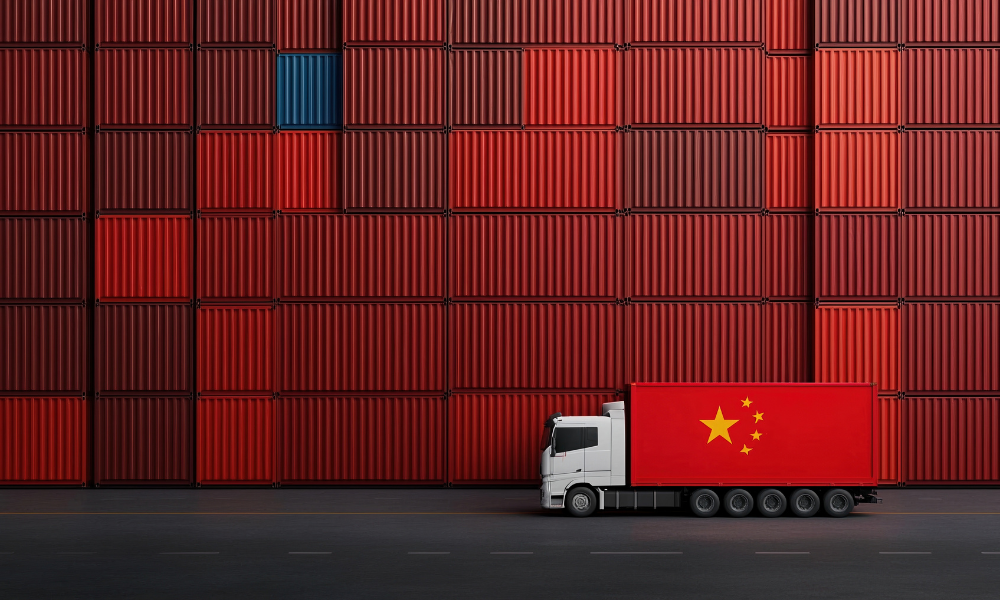Uncertainty in US-China trade pushes businesses to frontload shipments and absorb higher costs

Retailers and logistics executives in the US are anticipating another surge in trade from China as a result of a temporary pause in tariff hikes.
The 90-day suspension follows a trade deal announcement by the US and China, though the specifics remain vague.
According to CNBC, the halt affects the steepest tariffs implemented by US President Donald Trump, but a 10 percent broad-based tariff and a 20 percent fentanyl-related tariff remain in place.
Retailers and logistics companies remain concerned about pricing.
Bruce Kaminstein, member of NY Angels and founder and former CEO of Casabella, said that consumer product margins of 40 to 50 percent make it difficult to absorb a 30 percent tariff.
Alan Baer, CEO of OL USA, added that the current tariff level challenges importers’ profitability, and said volume increases, space constraints, and price pressures from blank sailings could worsen the situation.
Blank sailings of freight vessels from China have been on the rise throughout the trade war.
Xeneta data shows a 17 percent drop in vessel capacity from China to the US West Coast since April 20, with blanked sailings up 86 percent in the same period.
A combination of margin absorption, cost reduction, and price increases will be required, Kaminstein said, noting that unpredictability in policy complicates forecasting.
“How do you quote 90 days out? How do you forecast a cash flow statement? How do you make long-term capital decisions?” he said.
Xeneta’s chief shipping analyst, Peter Sand, warned that ocean freight rates from China to the US West Coast could jump by 20 percent in the short term.
Despite a 56 percent drop in spot rates to the West Coast and a 48 percent drop to the East Coast since January 1, Sand said the current shipping surge will drive prices up.
“It takes time to shift capacity back again, so a revival in volumes from China to US may mean shippers have to pay a little ‘over the odds’ in the short term,” he said.
Stephen Edwards, CEO of the Port of Virginia, said the port is reviewing financial models from past disruptions — including Covid and Panama Canal restrictions — to prepare for a container surge.
“Once we know the playing field, the supply chain is very agile,” he said.
“What’s needed now is a long-term deal — not just with China but with all our trading partners — so we can predictably make long-term trade, investment, and sourcing decisions,” added Steve Lamar, CEO of the American Apparel and Footwear Association.
Eric Byer, CEO of the Alliance for Chemical Distribution, said the damage to the chemical supply chain has already occurred, and he expects a rush to replenish inventory during the tariff pause.
“Warehouses that are now in the 80–90 percent full range will drop precipitously, likely to less than 10 percent by the middle to end of June,” he said.
Byer added that inventory is extremely tight for phosphoric acid, used in detergents, beverages, and fertilizers, as well as for ascorbic acid (Vitamin C), ammonium bicarbonate, and sodium thiocyanate — all critical for construction and consumer products.
“I suspect we will see an incredibly active ordering frenzy that will once again have too few ships ready to accommodate the demand,” he said.
Paul Brashier, vice president of global supply chain at ITS Logistics, said many clients have containers pre-loaded in China, ready to ship.
He expects a surge in shipments over the next four to six weeks, describing the pause as “the pivotal moment for supply chain planning out of China.”
Judah Levine, head of research at Freightos, said that during the last round of 20 percent tariffs, ocean import volumes rose 11 percent year-over-year in March and April.
He expects the current 30 percent tariff to trigger another round of early shipments as companies try to beat a potential August tariff hike.
Rick Muskat, president of Deer Stags, said the tariff pause will allow the company to resume shipments from China.
However, he expects container rates to rise and costs to increase by nearly 40 percent. “So we will have to raise prices for fall deliveries,” he said.
The uncertainty around long-term tariff policy is prompting more frontloading of holiday inventory.
Muskat said shipments must leave China by August and September, and without a confirmed deal, “there will be a lot of front-loading inventory due to the uncertainty of what follows the 90-day pause.”
He noted that one shipment subjected to a 145 percent tariff had to be placed in a bonded warehouse, incurring more than $10,000 in storage costs — which will now be absorbed.
Matt Priest, CEO of Footwear Distributors and Retailers of America, said certain kids’ shoes still face a 97.5 percent duty due to pre-existing tariffs.
He called this “unacceptable” and urged the administration to implement exemptions to ease the burden.
Matthew Shay, CEO of the National Retail Federation, said the 90-day pause offers short-term relief but emphasised the need for global trade progress.
Adoniro Cestari of Citi added that many businesses will delay major investments due to ongoing volatility and will prioritise risk management strategies to prepare for longer-term barriers and disruptions.
Brashier said the shipping wave will drive peak season activity into the third quarter as firms prepare for 2026 construction and manufacturing deadlines.
He also pointed to potential boosts in trade from future US interest rate cuts or changes in Trump’s tax and deregulation policies.
Muskat concluded: “The continued uncertainty is a difficult way to run a business.”



